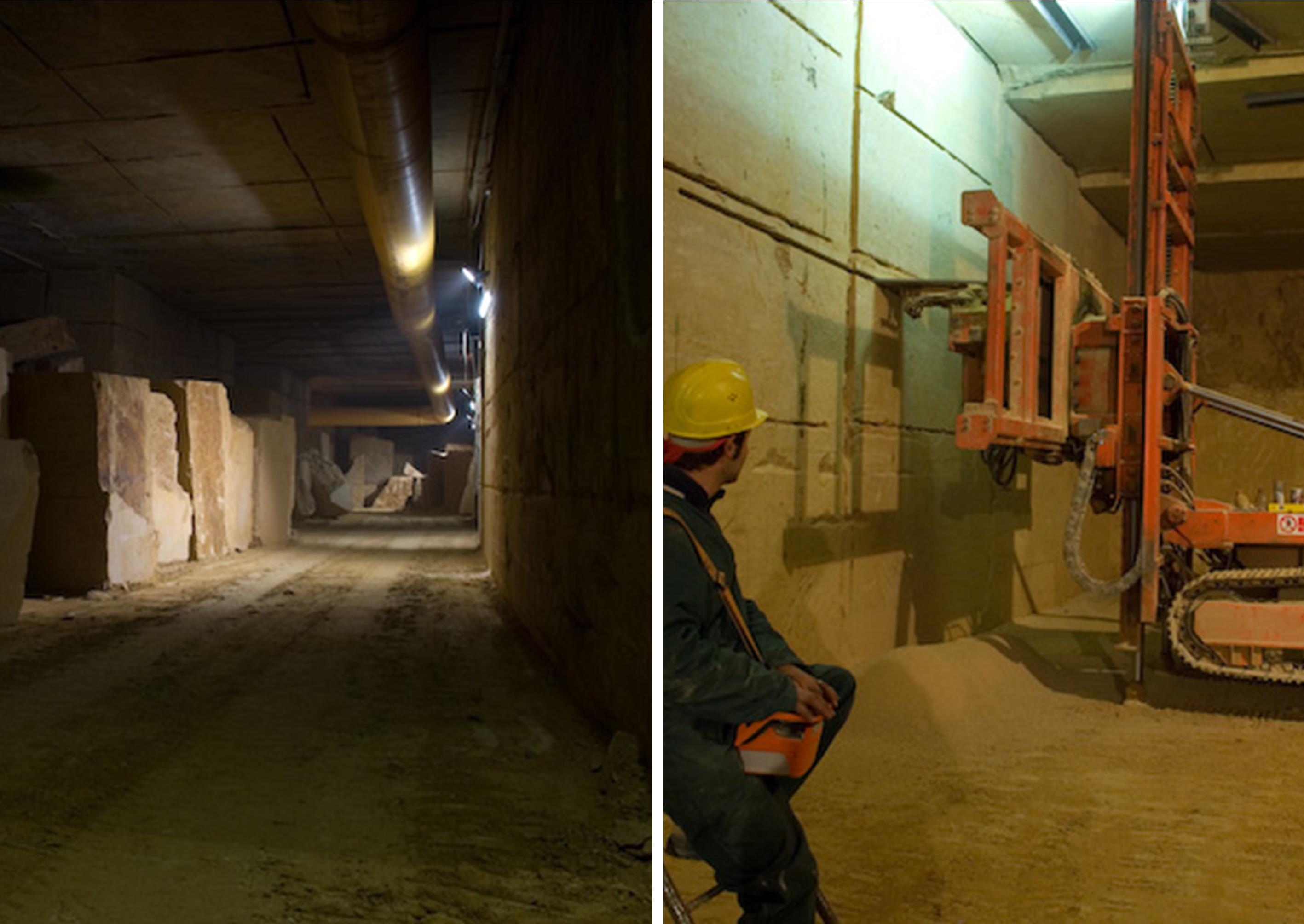Vicenza stone

A stone that comes from the sea, from something alive and extremely ancient
Vicenza Stone comes from limestone formed both by the collapse about 30 million years ago of a coral barrier reef where the Berici Hills currently stand, as well as by the deposition of the remains of shellfish, crustaceans, algae and other marine organisms onto the bed of the warm tropical sea found in the area at the time.
All this living organic matter remained imprisoned under the earth, and today helps to give Vicenza Stone its distinctive warmth, its porosity and its excellent workability, its soft hues: Yellow and Grey (geologically older and found at lower altitudes) and White (more recent and located much higher up).
Its creative use is potentially unlimited, ranging from sculpture to design, and encompassing every field of architecture.

The Berici Hills quarries
Quarrying has been carried out in the Berici Hills since pre-Roman times and continues to this day. Vicenza Stone was popularized back in the 16th century, especially by Andrea Palladio (1508-1580), who used it for many of his monumental creations as well as describing it in detail in The Four Books of Architecture.
In recent years, quarrying has made huge advances. Whereas quarrymen used to plant stakes by hand and hammer them, today’s modern techniques, and machine-cutting technologies allow for completely different solutions, far better in terms of quality, safety, effectiveness, and time.
Morseletto quarries have zero environmental impact, because they are all underground, leaving the wonderful scenery of the hills around Vicenza completely intact. When the stone is removed, large supporting pillars are left behind (measuring 8 metres x 8) so that at the end of the quarrying process, the entrance will be closed up, and these underground “cathedrals” remain safe both from a geological and an environmental point of view.
Laboratorio Morseletto continues what used to be common practice everywhere which is to bring the architects to the quarry, so that they can come into direct contact with the material and select each individual block on the basis of its unique nuances.
Laboratorio Morseletto continues what used to be common practice everywhere which is to bring the architects to the quarry, so that they can come into direct contact with the material and select each individual block on the basis of its unique nuances.
